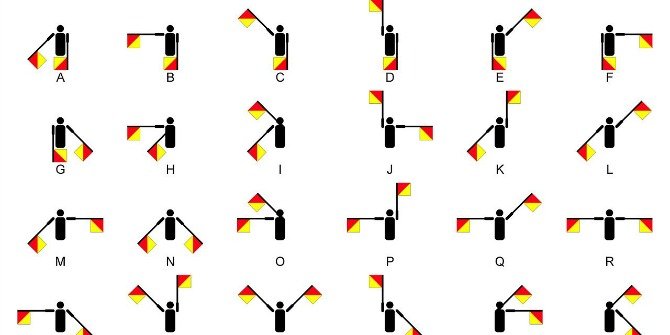2673: Foy–Breguet Telegraph System Apr 12, 2022
France was, of the developed nations in Europe, one of the last to see widespread use of a electric telegraph system. This was because there was already a large optical telegraph system, which was less susceptible to sabotage without external hardware, like the cable of electric telegraph systems. So, between the eras of the optical telegraph until the use of Morse code, the French used the Foy–Breguet system was in place, using two needles to visually indicate letters on a dial. The benefit was that it used the same orientations of the needles as were found on an optical telegraph, avoiding the need to retrain operators. It was electric though, not mechanical, so more efficient and easier to use than the previous system, now having the needles pulled into position by electromagnets. Still, the extent of the optical telegraph in France, not matched anywhere else, kept them more resistant to a newer, better system.
2660: Origins of Semaphore Mar 30, 2022
Although the idea of having a system of flag-signals to represent letters for use on ships or other long-distance scenarios might seem both vital and basic, the modern semaphore system only came about in 1866. This followed the telegraph system and the optical telegraph. While the optical telegraph was useful for shore-to-ship signalling as it was a large structure and could use long mechanical arms to do so, but on ships this was impractical so people signalled with their hands, often holding flags for visual clarity. That said, by the time semaphore was introduced formally, the optical telegraph was out of use, replaced with the electric telegraph.
2659: Optical Telegraph Mar 29, 2022
Before the advent of radio, and even the electric telegraph, there was still a need to transmit specific messages short-distance, especially without the use of cables. This was particularly needed with ships, and while a lighthouse can be useful sometimes, another machine called the optical telegraph was invented. At night, a so-called shutter telegraph use panels to precisely block light in order to transmit a message in code, but during the day, semaphore telegraphs would use long mechanical arms to indicate the different letters. Some could be used to transmit messages up to 20 miles with a telescope and good weather conditions, not only to ships but to other relaying post towers. These machines were not in use very long, but they did inspire the use of other developments that followed shortly.

